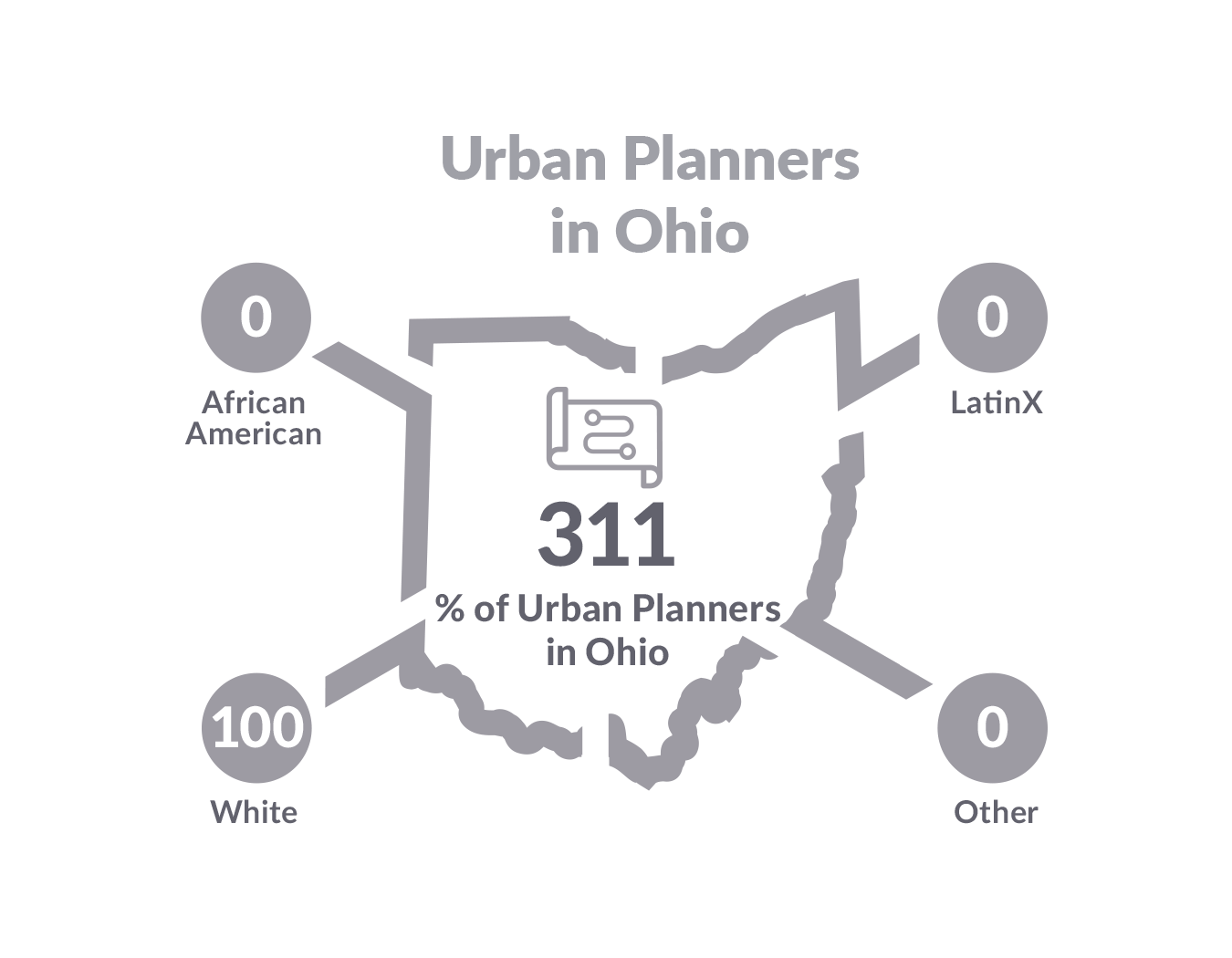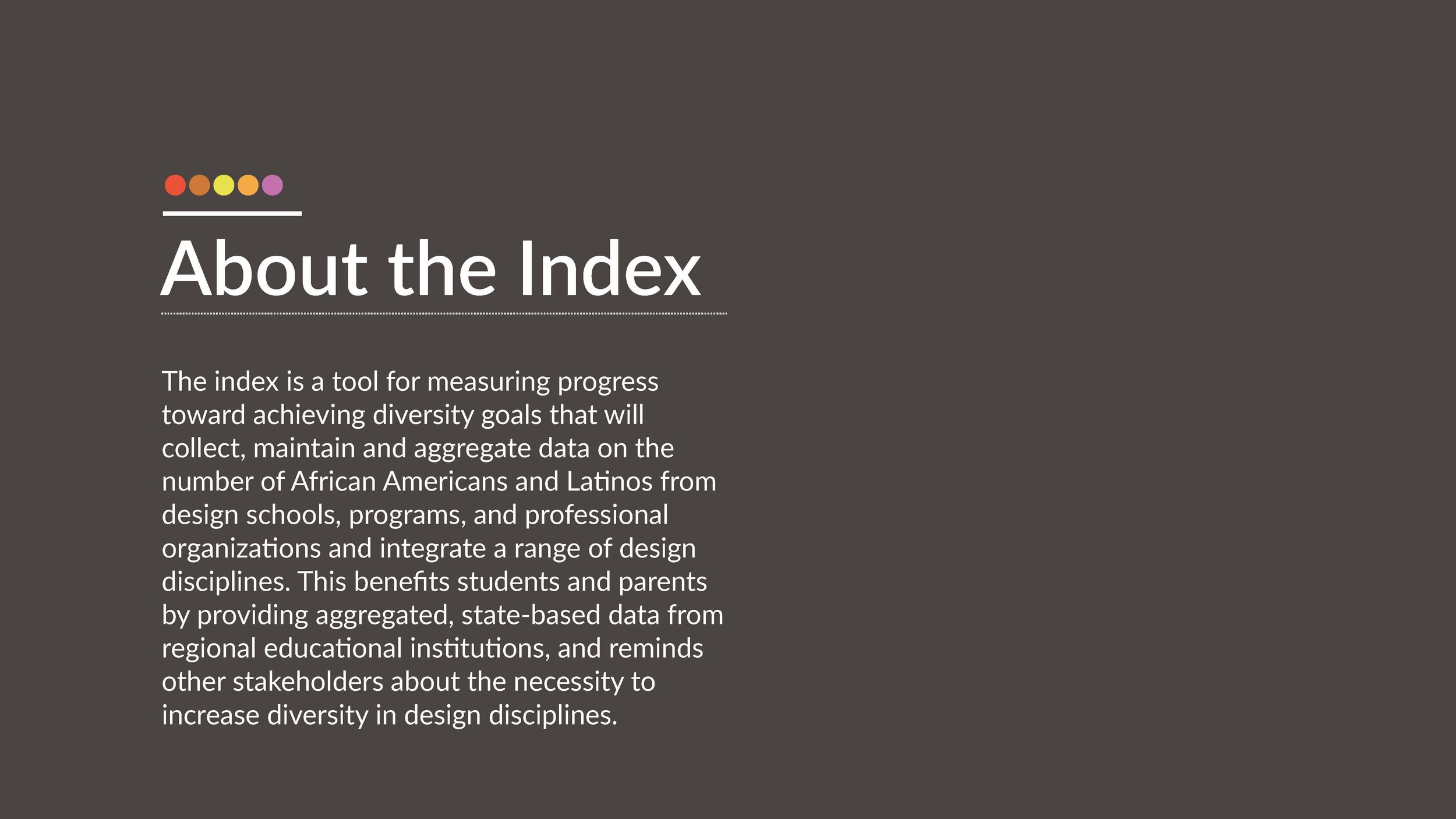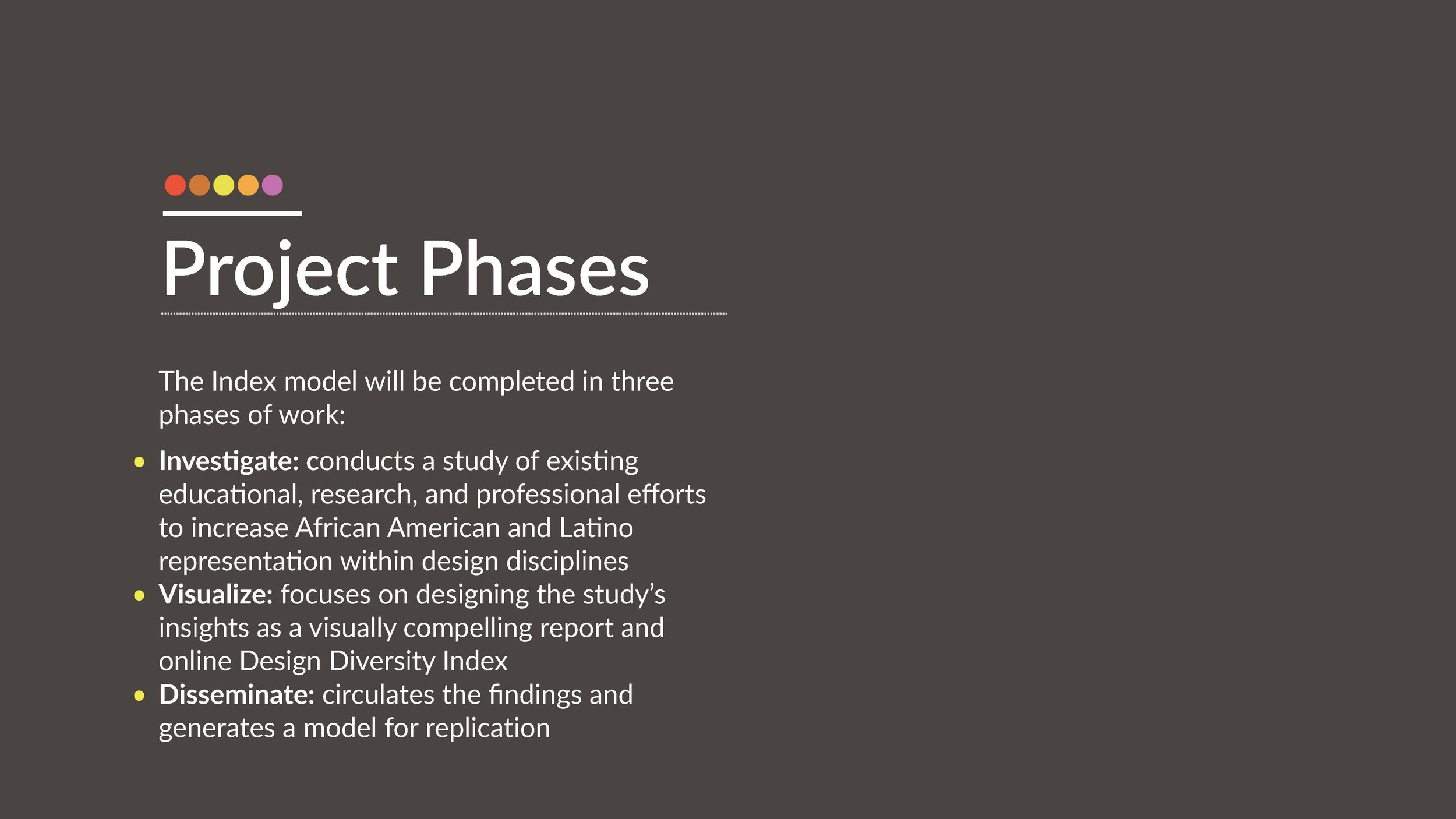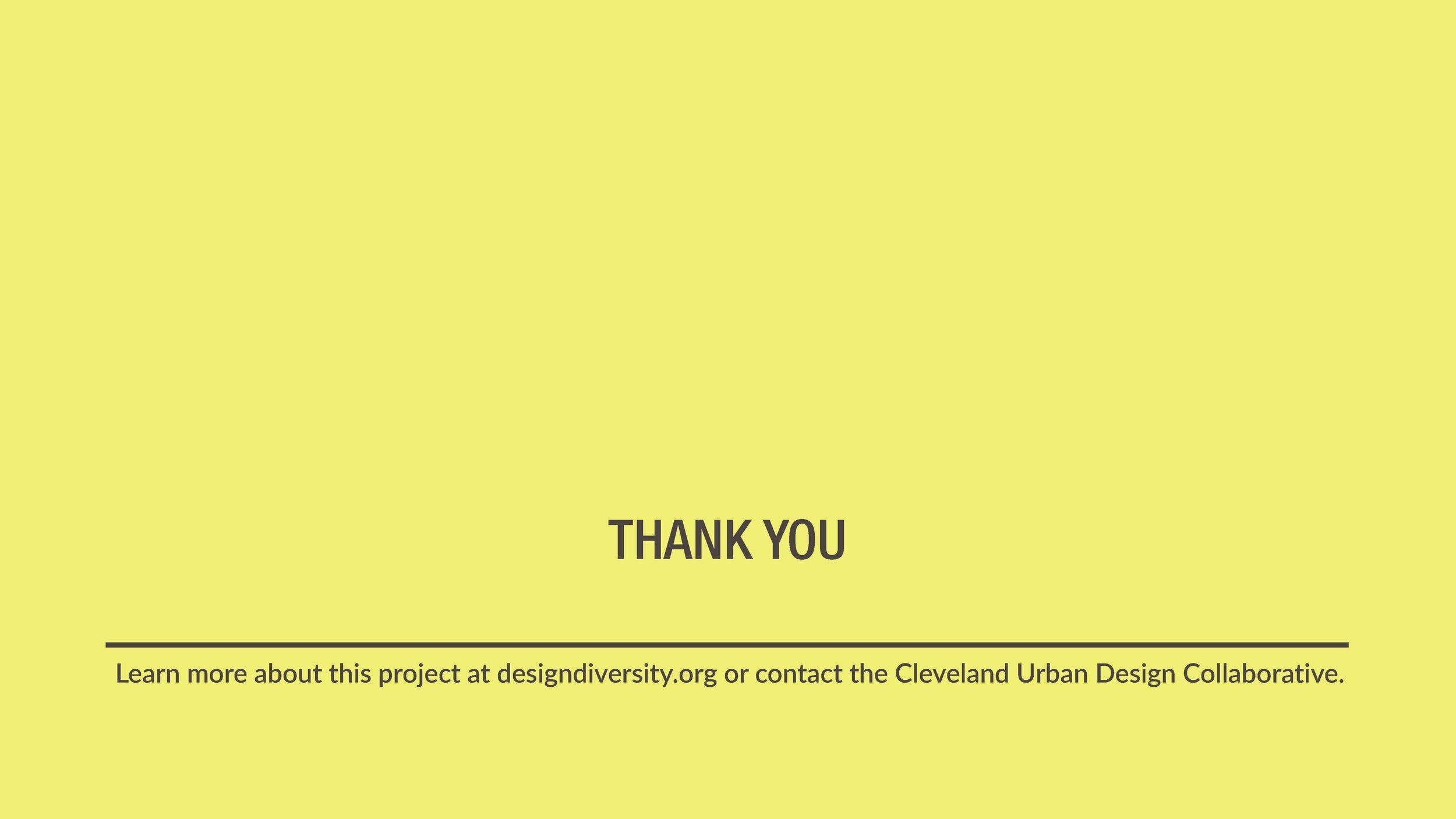A tool to measure progress toward increasing African American and Latinx representation across design disciplines.
Design Diversity Index tracks the number of people of color in architecture, landscape architecture, graphic design, industrial design, interior design, and urban planning in Ohio’s schools and professions. Following the mission of Design Diversity, the Index focuses on measuring demographics for African American and Latinx communities. Using available data sources, the Index establishes current baseline conditions and will track future progress toward expanding racial diversity in Ohio's design community.
Data Findings
The Design Diversity Index (DDI) is intended to grow with more data over time. The first version of the Index includes data from public universities in Northern Ohio and limited data on design professions in the state. Additional data from private universities, community colleges, and professional associations can build on the current framework. Annual updates will also show changes in numbers, which may be correlated to specific conditions. Measuring the data outcomes is an important step toward identifying effective actions to increase diversity.
The demographic data are organized in two categories: Academic Programs and Professional Workforce. These categories include data collected from undergraduate and graduate design programs, as well as professional data from Ohio's Bureau of Labor Statistics and design professional associations. Each category also includes key questions derived from the data, which offer opportunities for future research.
OVERVIEW
It could be argued that the lack of diversity is one of the most pressing problems in the design fields.
The fact that design professionals do not reflect the communities they serve limits the creativity and relevance of design projects. Strikingly, Ohio has 2,650 licensed architects, but only 63 are African American. This means 2% of the architects are African American in a state where 12% of the total population is African American. The city of Cleveland has fewer than 20 African American licensed architects, although the city is majority African American. Across Ohio, the number of people of color within each design discipline is very small, limiting the opportunities to learn what works locally to increase diversity. Academic institutions, private firms, and cultural organizations alike would benefit from a shared resource that enables this situation to change.
What is Design Diversity Index?
The Design Diversity Index project began with a question: How can the design community know which actions are working best to increase diversity in our fields? In order to answer this question, data must be available on the number of people of color in design schools and professions. Strategies to increase African American and Latinx representation should be evaluated on their results. How else can one know if intentions actually work?
Rather than compare data from a single design discipline across numerous geographic regions, the Index compares multiple design disciplines within a single geographic area. By focusing on a single state, Ohio, the project aims to identify locally-relevant strategies to increase diversity. This approach is intended to complement other valuable diversity studies focused on a single discipline. In other words, the Index serves as a cross-cutting tool to share insights across disciplines, while maintaining a shared local context.
Anticipated to grow over time, the current Design Diversity Index includes visualizations of demographic data from 15 academic design programs in Northern Ohio and three design professions across the entire state. Design Diversity Index provides a framework to add more data and user functionality through succeeding versions. The initial development version of the project is made possible by support from The George Gund Foundation.
What's Next for Design Diversity Index?
In order to advance beyond this first phase, the project intends to solicit feedback and generate action. Feedback on the Index structure is welcome in order to refine and improve the tool. Design Diversity Index is meant to provide a one-stop shop to easily find diversity data on multiple design disciplines. Therefore, several improvements will be necessary to ensure reliable comparisons across all six disciplines. Ideally, the Design Diversity Index started in Ohio will serve as a model that can be adopted in other communities across the United States. Enabling individuals in other states to track demographics in their geographic area may raise awareness of the local need for racial equity, encourage dialogue across disciplinary boundaries, and reveal the actions most effective to produce change in that community.
INDEX Template
The following template illustrates the actions other communities can take to create their own local version of the Design Diversity Index.
Research Team
The project’s key individuals included Cleveland Urban Design Collaborative (CUDC) staff members Terry Schwarz, David Jurca, and Beth Conway. Data collection was led by research consultant Jacinda Walker, founder of designExplorr, and former Chair of AIGA’s Diversity & Inclusion Task Force. Additional data collection support was provided by research assistant Velvette De Laney from dewdropstudios and information designer Josh Kruszynski.
If you would like to receive updates on the Design Diversity Index, please stay connected through our Design Diversity mailing list.














